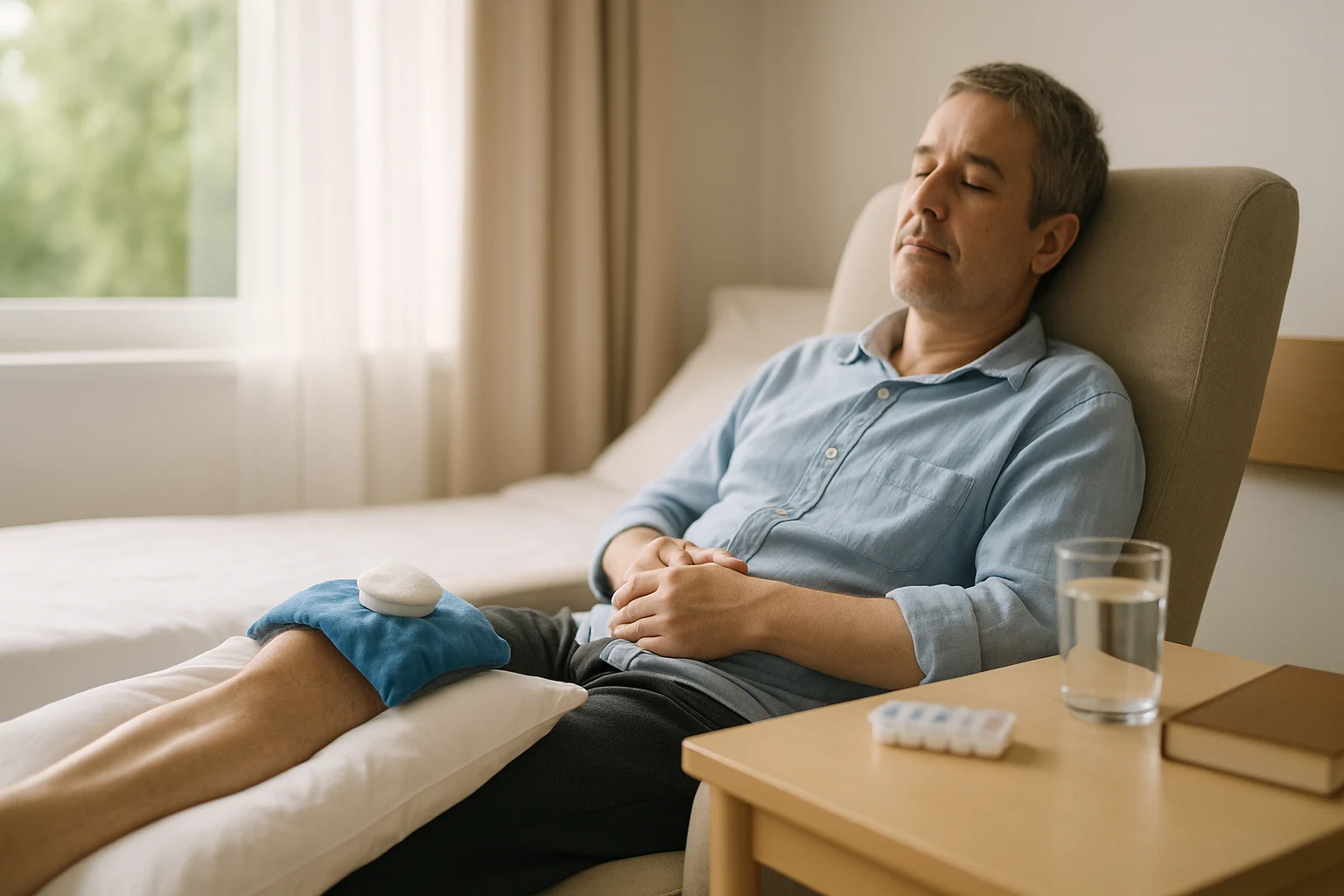Undergoing orthopaedic surgery—whether it’s a hip or knee replacement, ACL reconstruction, or fracture repair—can be life-changing. But managing post-operative pain plays a big part in how quickly you recover. In this article, I’ll dive into effective pain control options, non-opioid strategies, setting realistic expectations, and when it’s important to contact your care team.
1. What to Expect with Pain
- Initial Phase (0–48 hours): It’s normal to experience moderate to intense pain. This phase is when your body reacts most strongly.
- Early Recovery (3 days to 2 weeks): Pain typically becomes more predictable and manageable as swelling decreases.
- Mid-Term Recovery (2 weeks to 3 months): Pain gradually shifts from sharp, surgical pain to mild discomfort or soreness.
- Long-Term Outlook (3 months+): Most patients describe occasional aches, especially during activity, but without constant severe pain.
2. Setting Realistic Expectations
- Complete numbness is not realistic. Some soreness around the incision and deeper joint pain is expected.
- Active participation is key. The more you move and adhere to your rehab routine, the better your long‑term comfort and function will be.
- Pain is a guide—not the enemy. Discomfort near the incision or during rehab can be a signal you're rebuilding strength and mobility—but unusual or worsening pain deserves attention.
3. Pain Control Options
a) Medication
- Paracetamol (acetaminophen): The cornerstone of pain relief. Safe for most people and excellent when used regularly.
- NSAIDs (e.g., ibuprofen, naproxen): Helpful for reducing inflammation and swelling. They are often used alongside paracetamol but must be taken with food unless instructed otherwise.
- Opioids: Generally reserved for the first week or so in moderate to severe pain, usually in combination with paracetamol and NSAIDs. We aim to taper off opioids as soon as possible to avoid side effects like constipation, drowsiness, and dependency.
b) Local Pain Techniques
- Nerve blocks or regional anaesthesia: These are used during surgery and can provide excellent pain relief for 12–48 hours post-op.
- Local anaesthetic wound infusions: Sometimes preferable for joint replacement patients and administered through a catheter placed during surgery.
c) Non-Drug Methods
- Ice and elevation: Essential in the first few days—apply ice wraps and elevate the limb to reduce swelling and ease discomfort.
- Compression: Sock or bandage-based compression may aid swelling control.
- Heat (later phase): Once wounds are healing, gentle heat can soothe stiffness and muscle soreness.
4. Non-opioid Strategies
- Scheduled paracetamol and NSAIDs: Use these on a set schedule initially, rather than just when pain spikes.
- Movement and gentle exercise: Early mobilisation accelerates recovery and diminishes pain over time. Stick with your physiotherapy plan.
- Mind–body techniques: Simple relaxation, distraction (such as listening to music), and deep-breathing exercises can significantly reduce pain perception.
- Supportive devices: Crutches, braces, or walkers help balance load and reduce pain during ambulation.
5. Monitoring Progress & Knowing When to Seek Help
Most pain should improve each week. However, contact your care team if you experience:
- Severe, increasing pain not eased by regular medication or ice
- Redness, swelling, or discharge around the wound
- A high temperature (fever) or feeling unwell
- Numbness, tingling, or weakness beyond expected
- Difficulty breathing (especially if you’ve been on opioids)
6. Sample Pain Management Plan (as a List)
Days 0–7 (Immediately After Surgery):
- Take paracetamol 1 g every 6 hours.
- Add ibuprofen 400 mg every 8 hours, unless contraindicated.
- Use a short course of codeine or other opioid only if needed, under supervision.
- Apply ice packs 3 times a day.
- Elevate the affected limb.
- Begin light walking with assistance (crutches or walker).
Week 2:
- Continue paracetamol and NSAIDs as needed (not necessarily on a fixed schedule now).
- Cease opioids unless otherwise advised.
- Introduce gentle physiotherapy exercises.
- Consider applying heat packs for muscle stiffness (ensure the wound is healed).
Weeks 4–12:
- Use paracetamol or NSAIDs only when needed for discomfort.
- Increase activity and physiotherapy intensity gradually.
- Incorporate light exercises like stationary cycling or pool therapy (if approved).
- Engage in relaxation techniques and sleep hygiene to aid overall recovery.
Months 3 and Beyond:
- Occasional paracetamol or anti-inflammatories may be used after high activity.
- Maintain regular exercise and stretching routines.
- Resume more advanced activities under guidance.
- Focus on long-term joint health, weight management, and lifestyle support.
7. Helping Yourself Recover
- Follow instructions carefully. Medication adherence and physiotherapy compliance are crucial.
- Listen to your body. Pain during gentle rehab is okay—excessive pain isn’t.
- Stay hydrated and eat well. Nutrition plays a big role in healing and pain control.
- Seek support. Lean on friends, family, or a support group; recovery can feel less daunting with encouragement.
FAQs
Q: Is it normal to take opioids after my joint replacement?
A: Yes—limited use under close supervision can be appropriate to control early post-op pain, but we generally aim to stop them within the first week as other methods take over.
Q: Can I drive while using pain medication?
A: No—especially when using opioids or sedating medications. Wait until you’ve stopped these and your surgeon confirms you’re safe to resume driving.
Q: What if the NSAIDs upset my stomach?
A: Take them with food, avoid alcohol, and talk to your doctor—sometimes a gastro‑protective agent can be prescribed, or paracetamol alone may suffice.
Q: When can I expect riding, swimming, or light jogging?
A: Low-impact activities like swimming often start 6–8 weeks post-op; jogging usually comes later, depending on surgical type. Your physiotherapist will guide you based on your progress.
Q: How long will swelling and stiffness last?
A: Mild swelling and stiffness can persist for 3–6 months. During this time, incremental gains in mobility are the goal, aided by ongoing home exercises.

